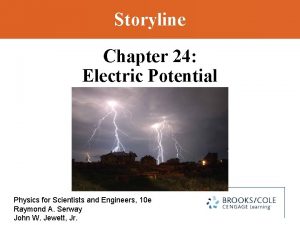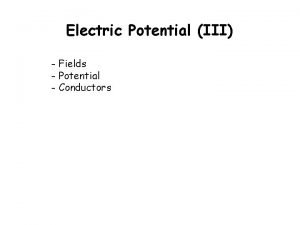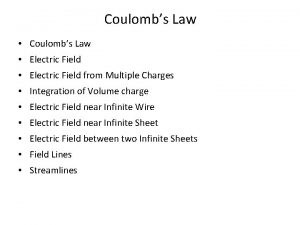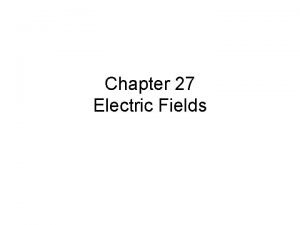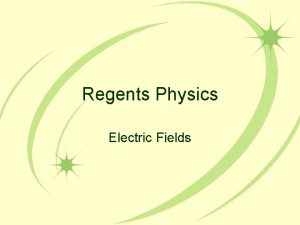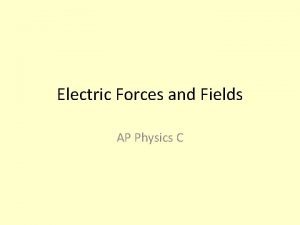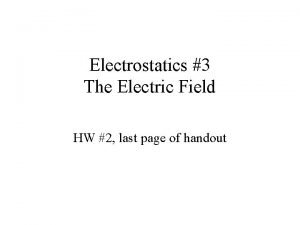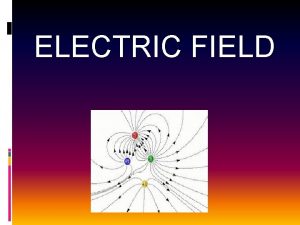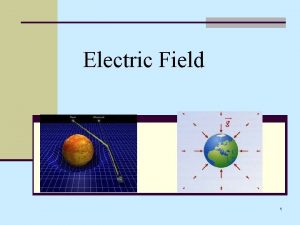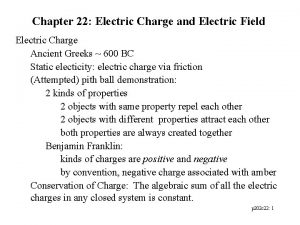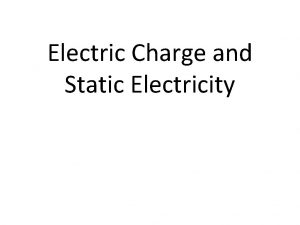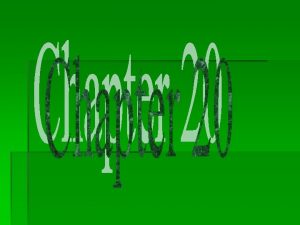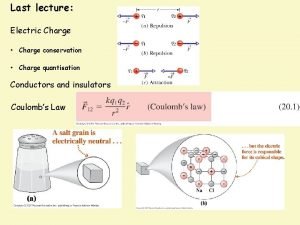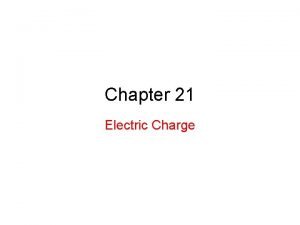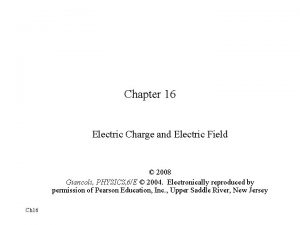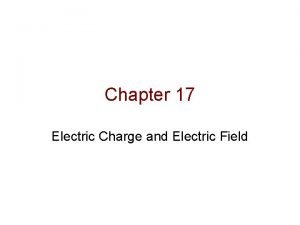Chapter 21 Electric Charge and electric Field Charles

















- Slides: 17

Chapter 21, Electric Charge, and electric Field Charles Allison © 2000

21 -4 Induced Charge; the Electroscope Metal objects can be charged by conduction: Charles Allison © 2000

21 -4 Induced Charge; the Electroscope They can also be charged by induction, either while connected to ground or not: Charles Allison © 2000

21 -4 Induced Charge; the Electroscope Nonconductors won’t become charged by conduction or induction, but will experience charge separation: Charles Allison © 2000

21 -4 Induced Charge; the Electroscope The electroscope can be used for detecting charge. Charles Allison © 2000

21 -4 Induced Charge; the Electroscope The electroscope can be charged either by induction or by conduction. Charles Allison © 2000

Electroscope https: //www. youtube. com/watch? v=-Js. VZwc 1 d. Oo Charles Allison © 2000

21 -5 Coulomb’s Law Experiment shows that the electric force between two charges is proportional to the product of the charges and inversely proportional to the distance between them. Charles Allison © 2000

Coulomb’s Law The magnitude of the electric force two charges exert on each other q 1 q 2 • This is the magnitude of the force k = 8. 99 x 10+9 Nm 2/C 2 = coulomb’s constant • Direction: – always along a line between the two charges – Can be attractive or repulsive depending on the signs of the charges – Forces on the two charges are equal in magnitude and opposite in direction Charles Allison © 2000

21 -5 Coulomb’s Law The force is along the line connecting the charges, and is attractive if the charges are opposite, and repulsive if they are the same. Charles Allison © 2000

21 -5 Coulomb’s Law Unit of charge: coulomb, C. The proportionality constant in Coulomb’s law is then: k = 8. 99 x 109 N·m 2/C 2. Charges produced by rubbing are typically around a microcoulomb: 1 μC = 10 -6 C. Charles Allison © 2000

21 -5 Coulomb’s Law Q 1 Q 2 + a) c) - + F 31 3 F 32 Q 3 Question What is the correct Forces Diagram for charge 3 where F 31 is the force on Q 3 due to Q 1 and F 32 is the force on Q 3 due to Q 2? b) d) 3 F 32 F 31 3 F 32 Charles Allison © 2000

A) F = Fp B) 2 F = Fp C) 4 F = Fp D) F = 2 Fp E) F = 4 Fp Charge +2 e p +e Mass 4 mp mp Question An particle with a charge +2 e and a mass of 4 mp is on a collision course with a proton with a charge +e and mass mp. The only force acting is the electrostatic force. Which of the following statements is true about the magnitudes of the forces on the two particles? Charles Allison © 2000

Question An particle with a charge +2 e and a mass of 4 mp is on a collision course with a proton with a charge +e and mass mp. The only force acting is the electrostatic force. Which of the following statements is true about the accelerations of the two particles? A) a = ap B) 2 a = ap C) 4 a = ap D) a = 2 ap E) a = 4 ap Charge +2 e p +e Mass 4 mp mp Charles Allison © 2000

Problem 10 • Charles Allison © 2000

Problem 11 11. (II) Two positive point charges are a fixed distance apart. The sum of their charges is QT. What charge must each have in order to (a) maximize the electric force between them, and (b) minimize it? Charles Allison © 2000

Problem 12 12. (II) Particles of charge +75 μC, +48μC, and -85μC are placed in a line (Fig. 21– 52). The center one is 0. 35 m from each of the others. Calculate the net force on each charge due to the other two. Charles Allison © 2000
 Chapter 21 electric charge and electric field
Chapter 21 electric charge and electric field Chapter 21 electric charge and electric field
Chapter 21 electric charge and electric field K constant unit
K constant unit Units of a charge
Units of a charge Difference between charge and electric charge
Difference between charge and electric charge Difference between charge and electric charge
Difference between charge and electric charge 21lwuy8i6hw -site:youtube.com
21lwuy8i6hw -site:youtube.com Distinguish between magnetic and nonmagnetic materials
Distinguish between magnetic and nonmagnetic materials Difference between electric field and magnetic field
Difference between electric field and magnetic field Electric field of a finite line charge
Electric field of a finite line charge Electric field due to infinitely long straight wire
Electric field due to infinitely long straight wire Electric field of a finite line charge
Electric field of a finite line charge Electric field of infinite line
Electric field of infinite line Electric field equation
Electric field equation Properties of coulomb's law
Properties of coulomb's law Electric field lines about a point charge extend
Electric field lines about a point charge extend Electric field of line charge
Electric field of line charge Force on charge in electric field
Force on charge in electric field









